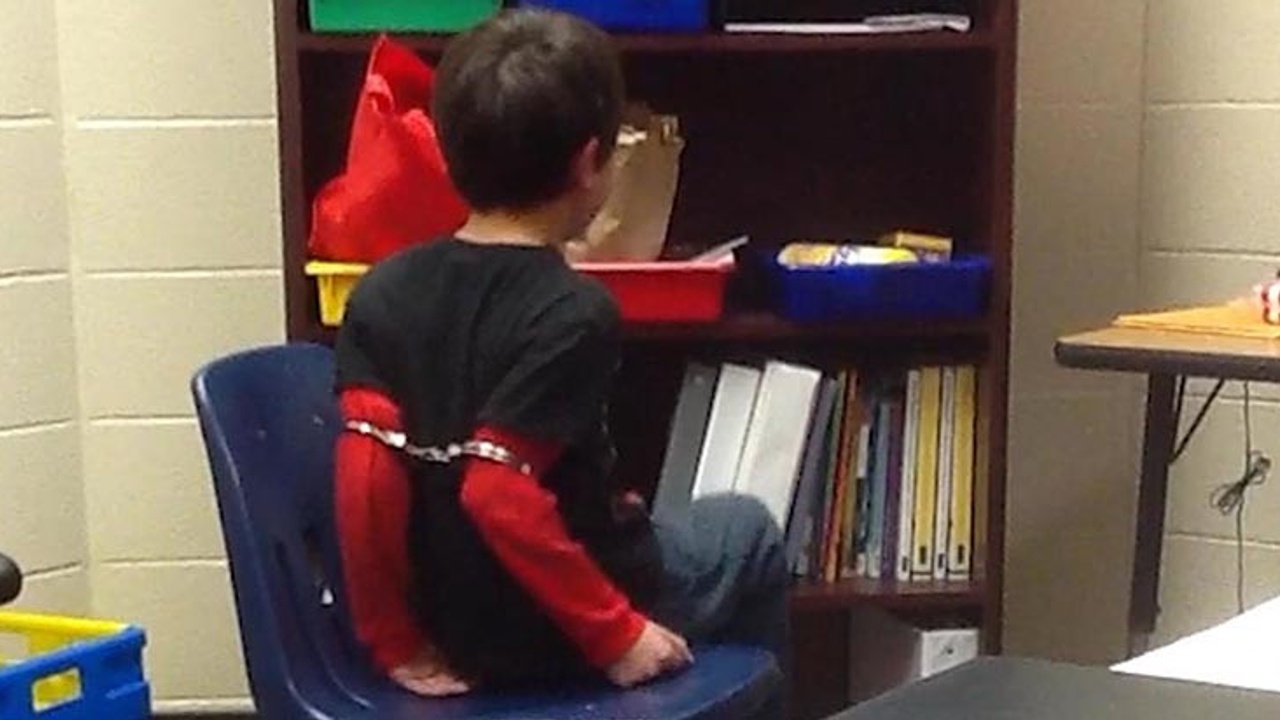
15 Principles of Restraint & Seclusion
May 13, 2022When I read that a six-year-old has been taken from a school in handcuffs by police, as a former special ed teacher, I want to take every administrator in the building from the school in handcuffs by police and let them stay in jail for a couple of days not knowing what is going to happen just to give them a taste of the trauma imposed on that child.
COMFORT not CONTROL
CONNECTION not CONSEQUENCES
I realize that behavior can be exceedingly disruptive and that is why it is so important for the parents and advocates of a child who has had disruptive and /or negative behaviors to be particularly vigilant as to how those incidents are being handled by the school. Has there been an FBA (functional behavior analysis) done by a BCBA (Board Certified Behavior Analyst)? Please be aware that no matter what the LEA says, no teacher can teach and take reasonable behavior data at the same time. Is there a plan for positive intervention? Are there guidelines for an emergency that are clear? Are they incorporated into the IEP? Remember if it is not part of the IEP there is no chance for compliance.
COMPASSION not JUDGEMENT
RELATIONSHIPS not RESTRAINT
Make sure that all incidents that result in discipline or removal from school are documented. Although special ed comprises only about 12% of the school population, it is 66% of the seclusion incidents and 71% of the restraint incidents. When the school calls and says come get your child, we cannot handle them- it is a suspension. Remember, they cannot suspend a child for a manifestation of their disability.
INCLUSION not SECLUSION
15 RECOMMENDED RESTRAINT & SECLUSION PRINCIPLES
- Prevention using structured environments and non-aversive methods (e.g., School-Wide Positive Behavioral Interventions and Supports) and use of data.
- Never use mechanical or chemical restraint. All medication must be administered by a licensed professional and physical restraints must not restrict movement.
- Physical restraint (used by trained professionals as a form of protection/planned behavioral strategy and only until the seriousness of the situation has dissipated) must only be used when someone is a danger to himself or herself or others.
- Policies related to restraint and seclusion should be for all children, not just students with disabilities.
- Any behavioral interventions must be non-abusive and consistent with a child’s right to dignity. School-wide supports should be customized for the needs of the population.
- Restraint and seclusion should never be used as punishment, coercion, retaliation, or convenience. Restraint and seclusion are not routine in nature and should not be used in response to minor or typical classroom issues.
- Restraint and seclusion should never be used if a child’s ability to breathe is impaired, or the child is harmed. Less restrictive means to address behavior should be used first.
- Multiple restraints need to be reviewed to determine
- whether incidents are related to an individual child, staff member, or classroom
- whether an FBA/BIP are in place to teach and support student behavior
- the need to review an existing FBA/BIP or develop if not in place, and
- the need for additional staff training.
- Strategies, including FBA/BIP are in place to address the underlying cause or purpose of the behavior.
- Regular and ongoing training for staff.
- Visual monitoring of restraint and seclusion incidents using a checklist and record keeping.
- Parents are informed of school/district policies in handbooks or other publications.
- Parents are notified as soon as possible following a restraint or seclusion incident.
- Policies are regularly reviewed and updated. Data need to be collected and analyzed based on subgroups (e.g., race/ethnicity, gender, ability), settings, staff, etc.
- Every restraint or seclusion incident is documented with information pertaining to specific data regarding each incident.
United States Government Accountability Office. (2009). Seclusions and restraints: Selected cases of death and abuse at public and private schools and treatment centers. Retrieved from http://www.gao.gov/assets/130/122526.pdf
U.S. Department of Education. (2010). Summary of seclusion and restraint statutes, regulations, policies and guidance, by state and territory: Information as reported to the regional comprehensive centers and gathered from other sources. Retrieved from https://www2.ed.gov/policy/seclusion/summary-by-state.pdf
U.S. Department of Education. (2012). Restraint and seclusion: Resource document. Retrieved

The IEP DEVELOPMENT EXPERTS
Make sure you SUBSCRIBE to the blog.
NSEAI's online courses efficiently lead parents and professionals to an expert level of education advocacy in just 12 days of on-demand courses that you can do at your convenience.
OUR CHILDREN DO NOT HAVE TIME TO WASTE.
LEARN TO DEVELOP A CHILD-FOCUSED IEP CORRECTLY FROM THE START vs JUST ACCEPTING A LEGALLY SUFFICIENT ONE!
CHANGE THEIR LIVES NOW
AUTHORS
Marie Lewis is an author, consultant, and national speaker on best practices in education advocacy. She is a parent of 3 children and a Disability Case Manager, Board Certified Education Advocate, and Behavior Specialist Consultant. She has assisted in the development of thousands of IEPs nationally and consults on developing appropriately individualized IEPs that are outcome-based vs legally sufficient. She brings a great depth of expertise, practical experience, and compassion to her work as well as expert insight, vision, and systemic thinking. She is passionate and funny and she always inspires and informs.
MJ Gore has an MEd in counseling and a degree in elementary education and natural sciences. She worked as a life-skills and learning support teacher She has been honored with the receipt of the Presidential Volunteer Service Award. She is the Director and on the faculty at the National Special Education Advocacy Institute. Her passion is social justice, especially in the area of education. She is a Board Certified Education Advocate who teaches professional advocates, educators, and clinicians the best practices in education advocacy.
